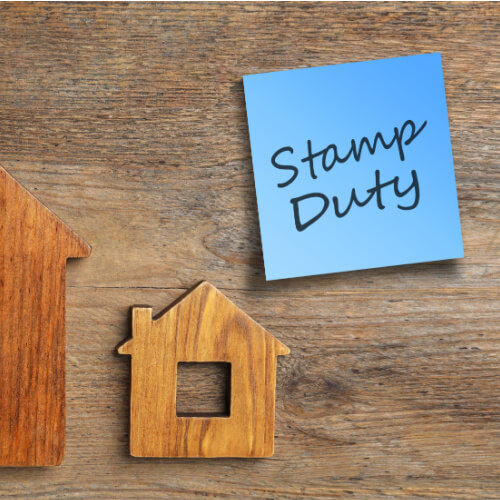 Written by James Hurwood
Written by James Hurwood
Reviewed by Stephen Zeller
Last updated 09/01/2024
Don't quite understand stamp duty? You might want to watch this explainer from Selling Houses Australia host, Andrew Winter.
![]()
Property-buyers in South Australia don’t have access to any concessions or exemptions like those on offer in other states and territories. This makes it crucial that they know exactly how much stamp duty they need to budget for, as it’ll likely be a major cost. With that in mind, our General Manager for Money, Stephen Zeller has the following tips:
Stamp duty fees differ depending on which state or territory in Australia you’re looking to buy in. When working out the estimated stamp duty for a home you’re looking to purchase, double check to make sure you’re estimating the right amount for the correct state/territory.
Stamp duty can sometimes be forgotten about when looking at your dream home and factoring in the final costs. When looking at the purchase price, factor in the stamp duty premium as well, as you may be disappointed later down the road if you don’t have enough funds to purchase the property.
Our expert Home Loan Specialists are here to help. They can be contacted via phone or email to assist you with any queries regarding how much stamp duty you may need to pay purchasing a home in SA.
Stamp duty in South Australia is charged on a sliding scale. The minimum stamp duty you may be required to pay increases in relation to the dutiable value of the property being transferred into your name.
The current general SA stamp duty rates (as of September 2022) are listed in the table below:¹
| Dutiable value of the property | Stamp duty payable |
| $12,000 or less | $1.00 for every whole or part $100 |
| $12,001-$30,000 | $120, plus $2.00 for every whole or part $100 over $12,000 |
| $30,001-$50,000 | $480, plus $3.00 for every whole or part $100 over $30,000 |
| $50,001-$100,000 | $1,080, plus $3.50 for every whole or part $100 over $50,000 |
| $100,001-$200,000 | $2,830, plus $4.00 for every whole or part $100 over $100,000 |
| $200,001-$250,000 | $6,830, plus $4.25 for every whole or part $100 over $200,000 |
| $250,001-$300,000 | $8,955, plus $4.75 for every whole or part $100 over $250,000 |
| $300,001-$500,000 | $11,330, plus $5.00 for every whole or part $100 over $300,000 |
| $500,001 or more | $21,330, plus $5.50 for every whole or part $100 over $500,000 |
So, say you purchase a property in Adelaide for $400,000; you’d pay $11,330 as well as $5 for every $100 or part of $100 between $300,000 and $400,000.
Dividing $100,000 (the difference between the two figures) by $100 gives us 1,000; multiply that by $5 and we have $5,000. Adding that to the initial $11,330 means you’d be facing $16,330 in stamp duty on your property purchase.
Keep in mind that these calculations are merely an example and don’t take any extenuating circumstances into account. Consider speaking to your conveyancer or solicitor if you’d like an accurate estimate of your payable stamp duty on a given property transfer.
It’s also important to note that the costs associated with buying a home don’t end there, and you may also have to pay for things like:
In South Australia, all transfers of residential and primary production land are considered ‘dutiable’ (i.e. subject to stamp duty) by RevenueSA. This includes:
For stamp duty purposes, residential land is land intended to be used as the buyer’s primary residence, while primary production land is land being used to conduct the business of agriculture, pasturage and horticulture, among other potential purposes.²
Be sure to do your own research or speak to your conveyancer or solicitor to check whether your property transaction will be considered dutiable by the South Australian state revenue office.
Stamp duty is calculated on the property’s settlement date in South Australia based on its final purchase price.³ It must then be paid before the purchaser can be registered as the owner on the Certificate of Title.⁴

First home buyers in South Australia must pay stamp duty just like anyone else purchasing property. Unlike many of Australia’s other states and territories, SA does not offer any stamp duty concessions or exemptions to first home owners.⁴
Unlike the rest of the country, prospective homebuyers in South Australia do not have access to any stamp duty concessions or exemptions.
Foreign buyers looking to acquire residential property in South Australia (or an interest in such) are required to pay both standard stamp duty and a 7% foreign ownership surcharge.⁵
![]()
Stephen has more than 30 years of experience in the financial services industry and holds a Certificate IV in Finance and Mortgage Broking. He’s also a member of both the Australian and New Zealand Institute of Insurance and Finance (ANZIIF) and the Mortgage and Finance Association of Australia (MFAA).
Stephen leads our team of Home Loan Specialists, and reviews and contributes to Compare the Market’s banking-relating content to ensure it’s as helpful and empowering as possible for our readers.
1 RevenueSA. Rates of stamp duty. 2023.
2 RevenueSA. Exemption where you use the land for primary production. 2023.
3 SA.GOV.AU. Settlement. 2023.
4 RevenueSA. First Home Buyer. 2023.
5 RevenueSA. Foreign Ownership Surcharge. 2023.